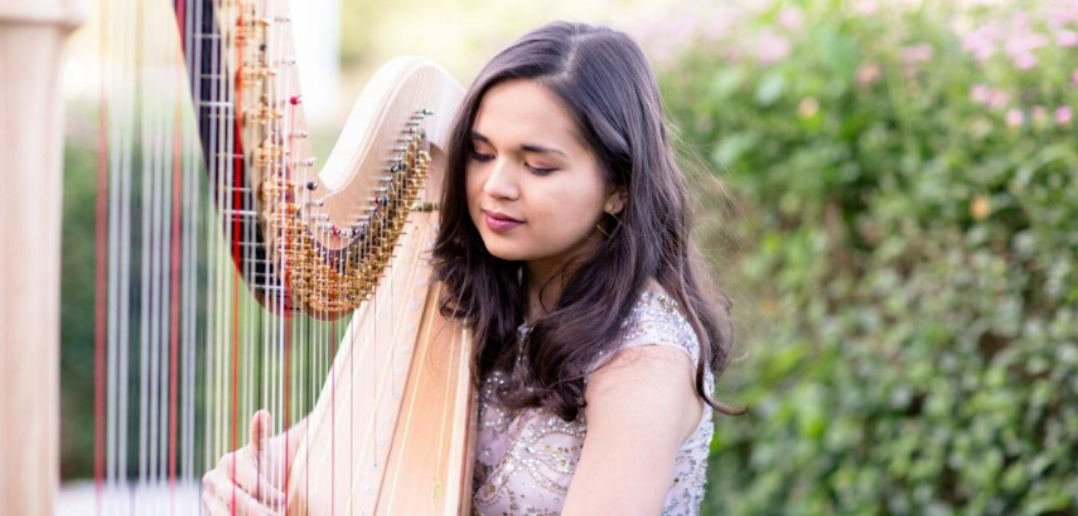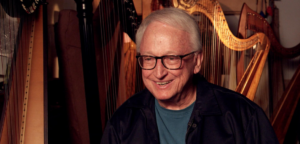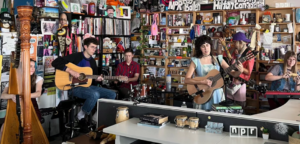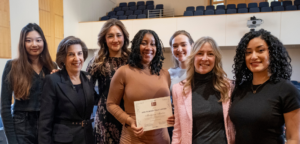Arizona harpist Claire Thai premiered her two-movement Harp Concerto in March, commissioned by the Tucson Symphony Orchestra (TSO) in 2019. Thai spent several years honing her composition skills as part of the TSO’s Young Composers Project, and the harp concerto is the fourth work the TSO has commissioned from its Young Composers Project alums. Besides Thai’s premiere of her concerto, she also performed Mozart’s Concerto for Flute and Harp with TSO principal flute Alexander Lipay on the same concert program.
Since 2018, Thai has studied with Elizabeth Hainen at the Curtis Institute of Music. This fall, she will become the first harpist to pursue a master’s degree at Curtis in its newly created master’s degree program for instrumentalists.
We reached out to Thai to find out more about her harp concerto.
Tell us about your experience with the TSO’s Young Composers Project.
I had a wonderful experience with the Tucson Symphony Orchestra’s Young Composers Project and was involved for seven or eight years. It is a unique program that allows young students to test out compositional ideas and gain invaluable experience by writing for different ensembles every week. For example, we wrote for everything from string quartet to wind quintet to percussion. The program culminates in the creation and performance of an orchestral work at the end of the year. I have found a love for composition and have been given so many opportunities through the Young Composers Project.
Why was this concerto commissioned?
This concerto was commissioned as the final piece in a series of commissions by the Tucson Symphony Orchestra. Over the past few years, Maestro José Luis Gomez and the TSO have been commissioning alumni of the Young Composers Project for different types of pieces—for example, other commissions have been written for orchestra and chorus, full symphony orchestra, etc. The final commission in the series was intended to be a concerto with orchestra, and it just so happened that I had played the Ginastera harp concerto with the TSO under Maestro Gomez the year before leaving for Curtis. Because we had worked together before, Maestro Gomez knew I was headed to conservatory and chose me to write the piece.
What styles of music inspired your concerto?
I think my favorite types of music were very influential in my compositional process—my favorite composers are Debussy, Ravel, Stravinsky, Prokofiev, and Shostakovich. The piece begins with a slow movement that I wanted to be sort of impressionistic, transitions through a cadenza, and ends with a fast, rhythmic, percussive movement. While I wanted the piece to be as original as possible, there are certainly influences from my favorite composers in many different aspects of the piece.
How did you showcase the harp in this work?
Showcasing the harp in a concerto was certainly tricky, especially in making sure that it would project through thicker textures. I wanted to use the orchestra to highlight the different styles and sounds the harp can produce, ranging from a lush, rich, more “stereotypical” harp sound in the first movement to a percussive, rhythmic second movement.
What was it like writing a concerto as a harpist?
I thought that it was both very helpful and somewhat limiting to be writing a concerto as a harpist. Of course it is great to know the intricacies of the instrument and what sounds good, but I also found myself choosing more “safe” options as I wrote the piece. As I edited each draft, I tried to make it still playable and not too difficult, but also to write something that wasn’t too common in typical harp repertoire.
What were your emotions when you gave the world premiere of your own composition?
When I performed the concerto for the first time, I felt like I had to remain incredibly focused to get through both this concerto and the Mozart flute and harp concerto. But the second and third concerts were some of the most enjoyable performances of my life. I am so incredibly grateful to both the TSO and Maestro Gomez for commissioning the piece and for having me play it!
For more information, visit the TSO’s website.











